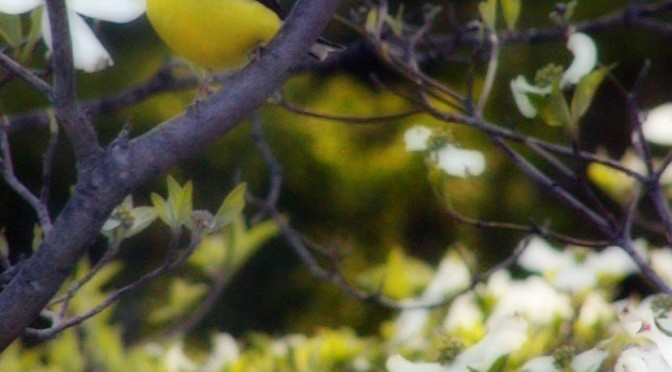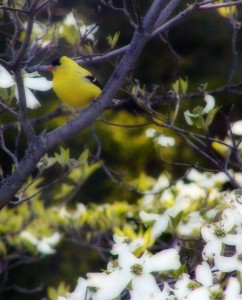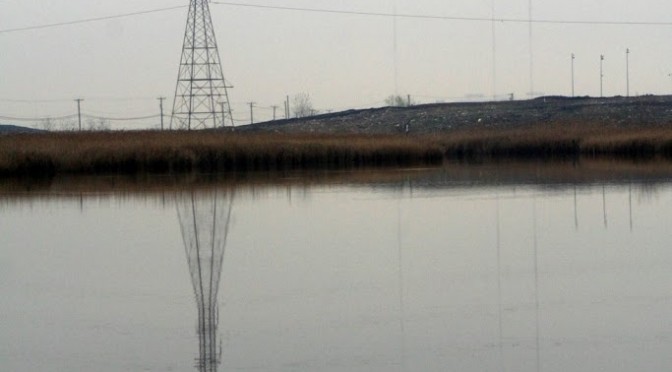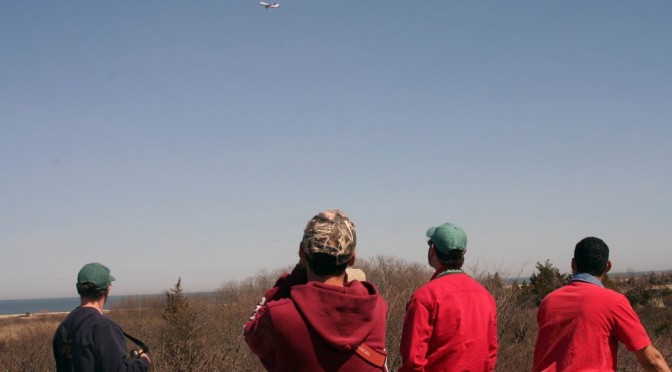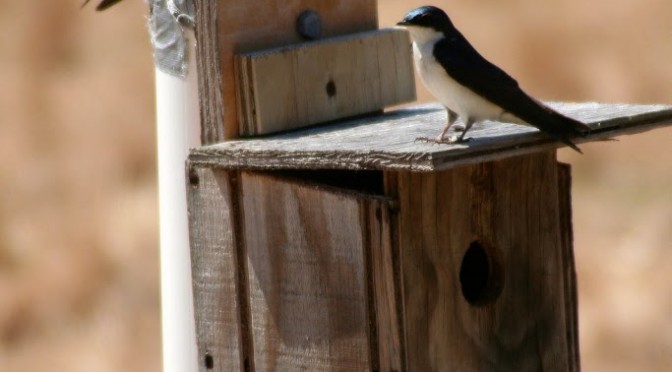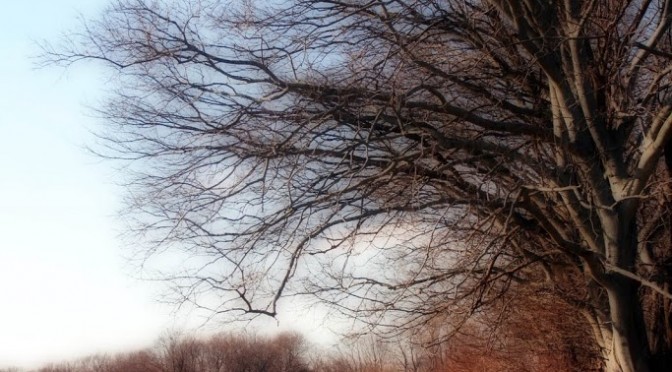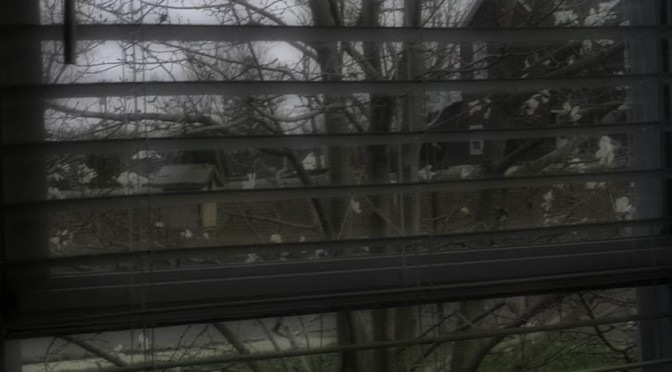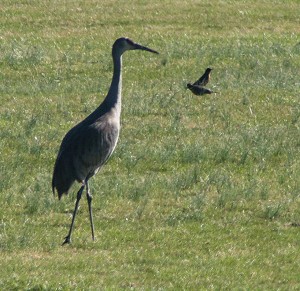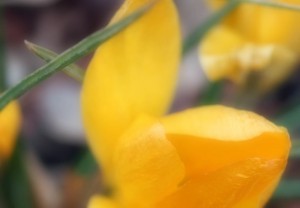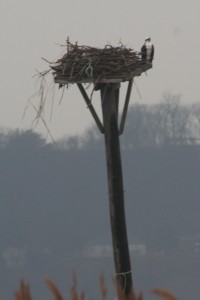Category Archives: Birds
Urban oasis
I went on a *special excursion* today with NJ Audubon to the NJ Meadowlands. I don’t know how far the reputation of this area travels outside of NJ, but it’s not a pretty place. All those awful things people like to say about NJ are because of the Meadowlands. If you’ve ever flown into NJ via the Newark Airport and traveled on the Turnpike you know what I’m talking about. A mess of chemical plants and trucking companies, factories and warehouses, and garbage dumps. Lots and lots of garbage dumps. All of this in the middle of a marsh and meadows.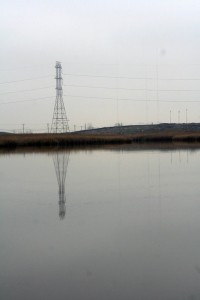 Times being what they are, all but a very few of the landfills have been capped and closed and environmental groups are working to mitigate the damage done through years of environmental abuse. Despite its history as a wasteland, the Meadowlands is a thriving ecosystem that supports many wildlife species, some of whom are endangered or threatened. There are some 8,000 acres of wetland that remain and which constitute one of the largest tracts of open space in the NYC metropolitan area.
Times being what they are, all but a very few of the landfills have been capped and closed and environmental groups are working to mitigate the damage done through years of environmental abuse. Despite its history as a wasteland, the Meadowlands is a thriving ecosystem that supports many wildlife species, some of whom are endangered or threatened. There are some 8,000 acres of wetland that remain and which constitute one of the largest tracts of open space in the NYC metropolitan area.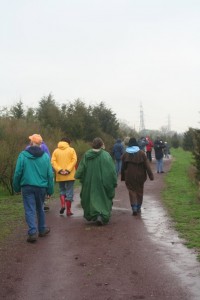 The point of our trip today was to get a special peak at the area and learn more about the research NJ Audubon is doing in the area, including an avian abundance and contaminants study. Our plan was to explore some of the nature trails through the marsh and wetlands, and then to take a cruise on the Hackensack River in a pontoon boat. Unfortunately it was pouring rain most of the day and the trail walk was abbreviated and the boat trip cancelled. But we had a nice free lunch. Here we’re walking in Harrier Meadow which had been the disposal site for rock from the construction of US Route 280 in the 60’s. Next to the meadow is a landfill, once the repository of municipal waste, that will one day be capped and turned into a golf course.
The point of our trip today was to get a special peak at the area and learn more about the research NJ Audubon is doing in the area, including an avian abundance and contaminants study. Our plan was to explore some of the nature trails through the marsh and wetlands, and then to take a cruise on the Hackensack River in a pontoon boat. Unfortunately it was pouring rain most of the day and the trail walk was abbreviated and the boat trip cancelled. But we had a nice free lunch. Here we’re walking in Harrier Meadow which had been the disposal site for rock from the construction of US Route 280 in the 60’s. Next to the meadow is a landfill, once the repository of municipal waste, that will one day be capped and turned into a golf course.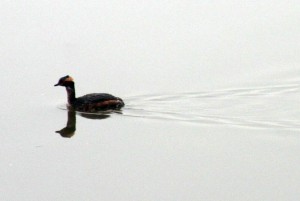 Feeling wholly unsatisfied after driving two hours and braving the wilds of North Jersey, I set out on my own in the rain to see what I could see. The impoundments around DeKorte Park had lots of waterfowl and newly arrived Forster’s Terns, and gazillions of newly hatched midges. I’m terrible with grebes, but I think this might be an Eared Grebe in fancy breeding plumage.
Feeling wholly unsatisfied after driving two hours and braving the wilds of North Jersey, I set out on my own in the rain to see what I could see. The impoundments around DeKorte Park had lots of waterfowl and newly arrived Forster’s Terns, and gazillions of newly hatched midges. I’m terrible with grebes, but I think this might be an Eared Grebe in fancy breeding plumage.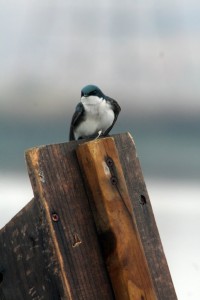 Tree swallows were everywhere, but I particularly liked this cheeky one! One of the scientists at the environmental center told us that she puts out between four and five hundred nesting boxes for tree swallows each spring. They were feasting on midges and busy setting up housekeeping today. We also saw some barn swallows and chimney swifts. Strangely, they have trouble attracting purple martins.
Tree swallows were everywhere, but I particularly liked this cheeky one! One of the scientists at the environmental center told us that she puts out between four and five hundred nesting boxes for tree swallows each spring. They were feasting on midges and busy setting up housekeeping today. We also saw some barn swallows and chimney swifts. Strangely, they have trouble attracting purple martins.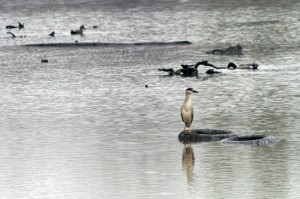 Finally, a very suspicious black-crowned night heron that had been feeding along the edge of one of the impoundments with a few egrets until I came along. The egrets high-tailed it across the marsh, but this guy hung around looking at me from his perch on an old tire. I spotted a few peeps and some yellowlegs also.
Finally, a very suspicious black-crowned night heron that had been feeding along the edge of one of the impoundments with a few egrets until I came along. The egrets high-tailed it across the marsh, but this guy hung around looking at me from his perch on an old tire. I spotted a few peeps and some yellowlegs also.
Aside from the birds, there should be lots to see here later in the season – fiddler’s crabs and diamondback terrapins and butterflies and dragonflies. Part of the park is actually built on a garbage island; a landfill site that has been capped and revegetated. There is the faint odor of garbage on the breeze and the roar of the NJ Turnpike in the background, but the wildlife seems to like it anyway. Oh and I got a raincheck on the boat ride, so look for sunnier pics sometime in the future.
Just a reminder that tomorrow is Good Planets Day at Vicki’s. Be sure to stop by and cheer her on for her hard work.
Goofing off at the beach
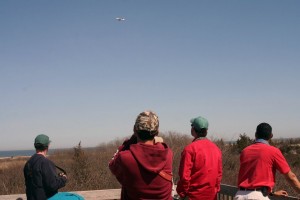 I took a short break this afternoon from pond-cleaning duty to visit Sandy Hook and the migration watch site. It was a beautiful day and the Hook was packed with people desperate for time outdoors. There were cyclers and bikers, rollerbladers and windsurfers, tourists and birders. Lots of birders. A Hooded Warbler was found yesterday and I thought I might get a peak at it, but no luck. There were a nice number of hawks moving today, I thought. Plenty of airplanes to look at when nothing else is going by.
I took a short break this afternoon from pond-cleaning duty to visit Sandy Hook and the migration watch site. It was a beautiful day and the Hook was packed with people desperate for time outdoors. There were cyclers and bikers, rollerbladers and windsurfers, tourists and birders. Lots of birders. A Hooded Warbler was found yesterday and I thought I might get a peak at it, but no luck. There were a nice number of hawks moving today, I thought. Plenty of airplanes to look at when nothing else is going by.
Lots of people hang out at the hawk watch to keep the counter company and to see what’s happening by. I saw a few broadwings, a red shoulder or two, and lots of turkey vultures. They tend to fly out a certain distance over the bay and then stall while deciding what to do, as they’re hesitant to cross the open water ahead of them. Most circle back and fly north via the bayshore. The dune vegetation is still very brown, but soon the beach plums will be blooming – can’t wait to see them all frothy white and humming with bees!
distance over the bay and then stall while deciding what to do, as they’re hesitant to cross the open water ahead of them. Most circle back and fly north via the bayshore. The dune vegetation is still very brown, but soon the beach plums will be blooming – can’t wait to see them all frothy white and humming with bees!
Swallows
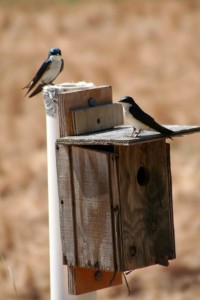 I found these tree swallows at lunchtime today. They were very involved in discussing the merits of this particular nest box, as compared to any of the others nearby, and didn’t mind that I got close to take a few pics.
I found these tree swallows at lunchtime today. They were very involved in discussing the merits of this particular nest box, as compared to any of the others nearby, and didn’t mind that I got close to take a few pics.
I found a really nice park within a five minute drive from my office; I’m not sure just how I never knew of it before, but I’m excited to discover someplace so nice to spend my lunch hour once in a while! There’s a pond and wooded ravine and a twenty acre butterfly meadow, which is where I found the tree swallows, and bluebirds, and flickers, and chipping sparrows. Heard a field sparrow singing there today and saw my first dragonfly of the season, too. Only butterfly today was a cabbage white, but the meadow is still just winter stubble. It looks promising though!
Spring surprises
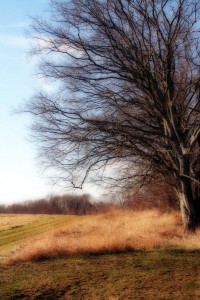 Two weeks or so ago, back when it felt like spring and I was inspired by the sunshine and its gentle warmth, I spent a Saturday afternoon wandering down some of the back roads that surround one of my favorite parks. There’s a few scenic farms and some great trees that I like to keep track of. There are also some beautiful horse farms and ridiculously large estate homes, but these are tucked away at the end of wooded roads that are marked *Dead End* even though they may go on for miles. Clearly, they don’t want visitors. I sort of appreciate that those folks aren’t flaunting their wealth the way some do.
Two weeks or so ago, back when it felt like spring and I was inspired by the sunshine and its gentle warmth, I spent a Saturday afternoon wandering down some of the back roads that surround one of my favorite parks. There’s a few scenic farms and some great trees that I like to keep track of. There are also some beautiful horse farms and ridiculously large estate homes, but these are tucked away at the end of wooded roads that are marked *Dead End* even though they may go on for miles. Clearly, they don’t want visitors. I sort of appreciate that those folks aren’t flaunting their wealth the way some do.
I ended up back at the park with the idea that I might find a few phoebes or some bluebirds and I was hoping for my first mourning cloak butterfly of the season. I visit this park pretty often, so know what to expect there, but it’s large and there are many trails and different habitats. Usually a surprise or two somewhere if I walk far enough. I walked through the wet bottomlands near the lake, drawn by the screaming of the peepers and flushed a few woodcock along the way. Not so much a surprise because I go there to see their courtship displays, but I was surprised with how easily they flushed! Each few steps flushed a new bird, who would fly just a bit further ahead, only to be flushed again as I walked along the wet trail. Woodcock are very colorful birds when you see them in the light of day. I also managed to flush a deer without realizing it until I saw it bounding across the cornfield uphill and towards the road.
The peepers that I went looking for went silent with my approach.
I visited a favorite tree and walked along the grass pathways that surround the farm fields here. There were no bluebirds, but I did hear a familiar song that I couldn’t put a name to right away. The song seemed to be drifting from every direction, but I wasn’t able to spot the birds singing. I’ve become very lazy lately and head out with just my camera and without binoculars. My ears are much better than my eyes, anyway. After listening for a while the words to the song I was hearing finally popped into my head, “spring of the year” and I realized there were meadowlarks in the fields surrounding me. I couldn’t s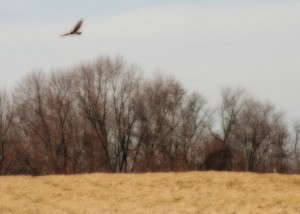 ee them, of course, but I knew they were out there because I recognized their song.
ee them, of course, but I knew they were out there because I recognized their song.
A hawk caught my eye drifting low and lazy over the fields and the meadowlarks flushed ahead of it. If I’d had my binoculars I might have been able to appreciate their lemon yellow and black markings as they finally made themselves visible above the stubble. Instead I watched the harrier as it flew gracefully over the field, pausing briefly and hovering for a longer look here and there, or whirling on a dipped wing to backtrack. I didn’t see it land, so guess it didn’t catch anything and finally it roamed out of my view. Before very long the meadowlarks were singing again and I went on to look for other surprises.
I think there’s a lot to be learned from visiting a place repeatedly and at different times of year. We might think we’ve seen all a place has to offer, but really, one or two visits give just a snapshot of what may be. The same can be said for our own backyards, because only by knowing what’s usual and normal can we get a sense for how special the unexpected is. Of course, the usual may be special too, but it’s nice to be surprised once in a while.
Early sounds
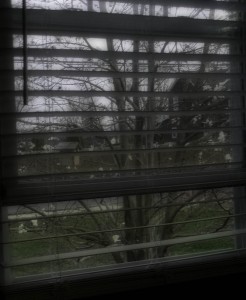 It’s still chilly, but I sleep with the bedroom window open just enough to let in the morning sounds. It’s early in the season still, so that every birdsong feels like a luxury. I’m a heavy sleeper, but the robins and cardinals rouse me from the warm covers in a much better mood than the blaring alarm clock does.
It’s still chilly, but I sleep with the bedroom window open just enough to let in the morning sounds. It’s early in the season still, so that every birdsong feels like a luxury. I’m a heavy sleeper, but the robins and cardinals rouse me from the warm covers in a much better mood than the blaring alarm clock does.
I think the robins are the first to begin with tentative calls before the sun has brought very much light to the morning. Then it’s the cardinals and the sparrows who call. As the light increases and the birds are encouraged by one another, calls turn to song. This morning I heard a white-throated sparrow singing his “Old Sam Peabody” and smiled to myself as I enjoyed a last few moments of slumber.
The rest of the morning routine is done in haste. I might spend a few minutes standing by the kitchen window with a cup of coffee watching the birds at the feeder, but by that time the house sparrows and starlings are up as well and any singing from the more talented birds is drowned out by their arguing over a perch at the free food buffet.
New birds and new songs will add themselves to the dawn celebration in the coming weeks; to the point that it becomes difficult to distinguish any one voice from the chorus of birds echoing one another in the gala that is spring. Maybe there’s one in particular that you listen for to know that the season has finally arrived, or maybe you enjoy the effect of so many voices singing the same song of delight but to a different tune. I could tell you what I think, but I’d rather know what you like to hear outside your window that says Spring.
😉
If, Then, Why?
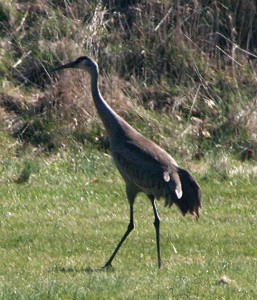 THEN what is it doing in NJ?
THEN what is it doing in NJ?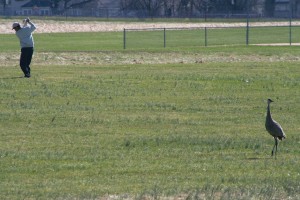 and WHY is this dope hitting his golf balls towards it?
and WHY is this dope hitting his golf balls towards it?No Cranes were hurt during the taking of these photos, but one birder (yours truly) was heard shouting multiple obscenities at said golfer who was utterly oblivious.
Photographed today at Wolf Hill Park in Oceanport NJ.
Just in case
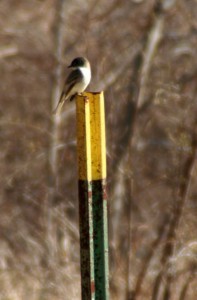 Just in case Spring hasn’t yet found its way to you in the form of a Phoebe or a Crocus, I’ll allow you this less than wonderful view of both in the meantime. This wasn’t the Phoebe’s favored perch, of course, but he had to find another when I took a bench seat beneath his chosen hawking perch overlooking a sunlit corner of a farm field.
Just in case Spring hasn’t yet found its way to you in the form of a Phoebe or a Crocus, I’ll allow you this less than wonderful view of both in the meantime. This wasn’t the Phoebe’s favored perch, of course, but he had to find another when I took a bench seat beneath his chosen hawking perch overlooking a sunlit corner of a farm field.I found other things too, but they’ll have to wait for another day.
Beach birds
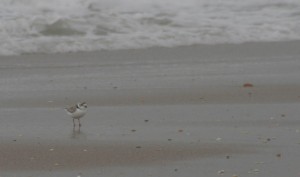 My little blue Honda was sort of waving at me from the office parking lot on Friday. Does that ever happen to you? It was waving and winking and whispering about how nice a few hours at the beach would be. So we took off together and went to Sandy Hook to see the Osprey and the Piping Plovers, both just back in the last week or so from parts south.
My little blue Honda was sort of waving at me from the office parking lot on Friday. Does that ever happen to you? It was waving and winking and whispering about how nice a few hours at the beach would be. So we took off together and went to Sandy Hook to see the Osprey and the Piping Plovers, both just back in the last week or so from parts south.
Late winter/early spring birdwatching is as good an excuse as any to get out of a stuffy and overheated office. Most places hold at least a few newly arrived birds. The beach was deserted and I felt the pleasure of finding this little Piping Plover and having it all to myself. The dreary weather may have kept other less desperate birders inside, b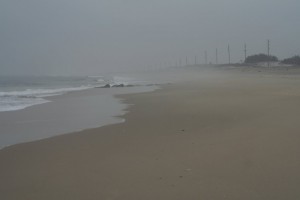 ut the fog and the crash of the waves only seemed to amplify the pleasant effect of hearing the plover’s repeated “Peep-lo” calls to one another across the beach. I was almost giddy with hearing it.
ut the fog and the crash of the waves only seemed to amplify the pleasant effect of hearing the plover’s repeated “Peep-lo” calls to one another across the beach. I was almost giddy with hearing it.
Piping Plovers are as special as they are hard to spot. NJ has on average just 120 nesting pairs. I can just imagine how confused and alarmed they must be when the deserted beaches they arrive on in March are increasingly populated with people as the weather warms and the nesting season progresses. They face predation from beachgoers and their pets, and from red foxes, racoons, and laughing gulls.
Symbolic string fences go up in early March to protect the high dunes where they nest from foot traffic by beachgoers. Volunteers monitor and protect the sites and educate the public about why the areas are closed. Cages or exclosures are placed around the nests once they’re dug to keep out foxes and large birds. These things help, I’m sure, but still the population continues to dwindle. There doesn’t seem to be enough being done, and the national park service doesn’t seem to have a realistic plan in place to protect these birds. Imagine these little ones having to find their way to the water past your beach blanket. 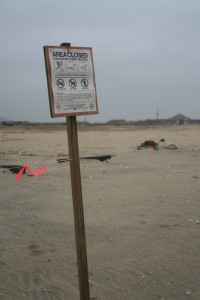
I’ve read recently of a new management plan in the works for Sandy Hook, the goal of which would be to achieve an average population of 51 to 61 pairs of Piping Plovers with a reproduction rate of at least 1.5 chicks per pair for five years. I’m anxious to see what is done to achieve that goal.
I seem to have gone off on a bit of a tangent here, but these little birds are close to my heart. I think they deserve much better than the *symbolic* protection we’re affording them: a bit of string, a few educational signs that most ignore, and a heap of garbage just beyond their property line. Maybe if more people had a rainy March day brightened by the plaintive calls of this bird, that, as Peterson says is, “as pallid as a beach flea or sand crab, the color of dry sand.” Maybe that’s their problem; they’re just not showy enough to merit our attention or our protection.
